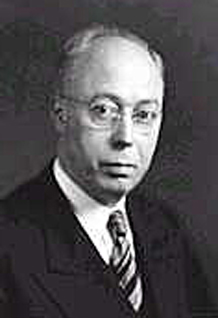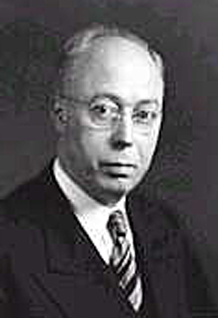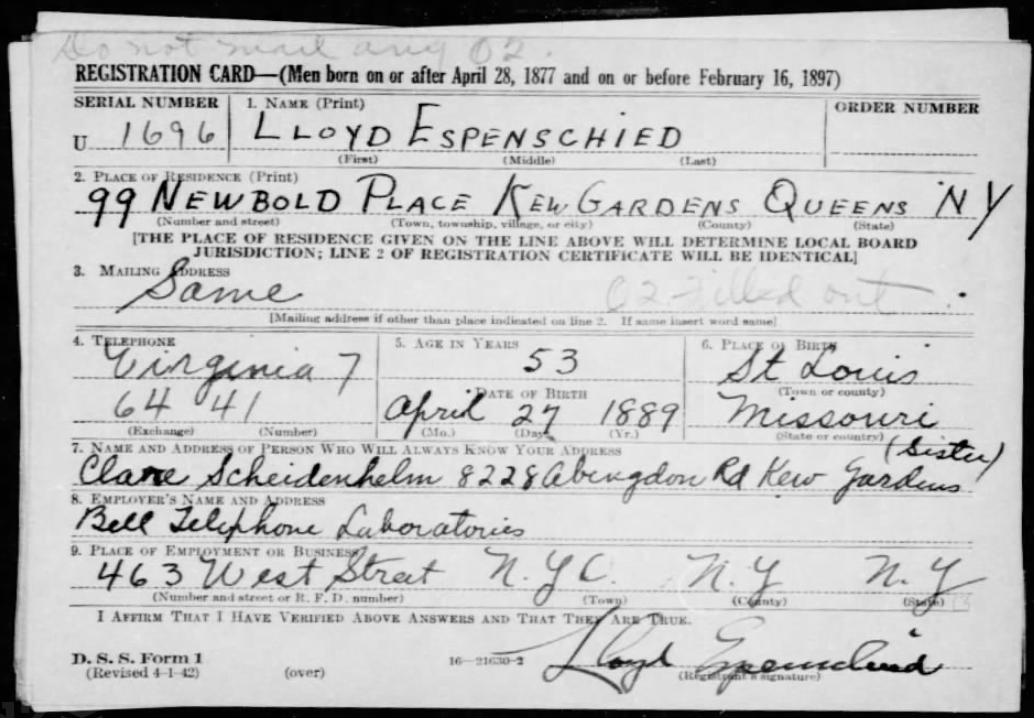He joined the Engineering Department of AT&T in 1910 and remained with the Bell Company until his retirement, in 1954. He joined the Wireless Institute, which merged with the Society of Wireless Telegraph Engineers in 1912 to form the IRE. He was recorded as a discussant of the first paper published in the Proceedings as well as three other papers in the first volume. He became a Fellow of the IRE in 1924 and a Fellow of the American Institute of Electrical Engineers (AIEE) in 1930.
At the Bell Company, Espenschied worked on the design of loading coils used to enhance telephonic communication by wire, and he also was a participant in long-distance radio telephone experiments using a vacuum-tube transmitter conducted by Bell engineers during 1915. He was sent to Pearl Harbor, Hawaii, to test reception from a transmitter in Arlington, Virginia. Beginning in 1916 he worked with several colleagues, including Herman A. Affel, on a carrier multiplex system which was put in operation between Baltimore, Maryland, and Pittsburgh, Pennsylvania, in 1918. As an outgrowth of this work, Espenschied applied for a patent in 1927 on the use of piezoelectric quartz crystals in band-pass filters. He and Affel jointly received a patent on a wideband coaxial cable system of transmission which was disclosed in a prize-winning paper published in AIEE's Electrical Engineering in October 1934. This invention eventually helped make television transmission achievable.
Espenschied also contributed to the development of wire distribution of radio programming used in network radio. He patented a collision avoidance system using reflected waves for railroad trains in 1924 and later applied similar techniques for a radio altimeter for airplanes which was produced commercially by the Western Electric Company beginning in 1937.
Late in his career, Espenschied became a collector of rare books dealing with electricity going back to the 16th century, a collection now located at the Niels Bohr Library of the American Institute of Physics. He also gave numerous talks dealing with invention and the history of telecommunication. He received about 130 patents during his career. He received the IRE Medal of Honor in 1940, "For his accomplishments as an engineer, as an inventor, as a pioneer in the development of radio telephony, and for his effective contributions to the progress of international radio coordination."; and the Pioneer Award of the IEEE Aerospace and Electronic Systems Group in 1967. He died in June 1986 at age 97.
Lloyd was the son of Fred and Clara Espenschied; he wed 29 April 1912 to "Lovey"--a fellow Pratt Institute student--Ethel Fairfield Lovejoy (1887-1973); 2 children:
Lloyd Jr. (1914-1998), wed Katherine Virginia Budd (1916-1981)
Carol (1919-2005), wed Wendell L. Rehm (1910-1988)
In 1875, Lloyd's father Frederick "Fred" graduated from the St. Louis Law School (which is today part of Washington University). Fred served as private secretary to his brother-in-law, Mayor Henry von Overstolz. Under Mayor David R. Francis, Fred later became City Treasurer before becoming State Senator from 1891-93. Fred (1856-1908) married Clara Marrion Espenschied (1856-1947) of Brooklyn, New York, on July 19, 1880. They had three children: Frederic Fairfax (1881-1974), Clare L. (1883-1966), and Lloyd (1889–1986). Clare is buried at Arlington National Cemetery with her husband, WWI veteran Frederick William Scheidenhelm (1884–1959).
Lloyd's grandfather was a successful Western wagon-maker. Louis Espenschied, who was Fred's father, was the owner of Louis Espenschied Wagon Company. Louis (1821-1887) wed 26 January 1844 in St Louis, Missouri, to Maria Catherine Weber (1825-1887). Maria's older sister Margaretha Weber (1819-1864) wed 17 November 1844 in St Louis, Missouri, to Christian Crecelius (1815- ).
Lloyd was an avid genealogist of the Espenschied/Esbenshade/Espenshade family, visiting Germany for the purpose of extensive research. He also compiled three charts detailing the Crecelius emigrants from Germany who settled in St Louis, Missouri, around 1820.
He joined the Engineering Department of AT&T in 1910 and remained with the Bell Company until his retirement, in 1954. He joined the Wireless Institute, which merged with the Society of Wireless Telegraph Engineers in 1912 to form the IRE. He was recorded as a discussant of the first paper published in the Proceedings as well as three other papers in the first volume. He became a Fellow of the IRE in 1924 and a Fellow of the American Institute of Electrical Engineers (AIEE) in 1930.
At the Bell Company, Espenschied worked on the design of loading coils used to enhance telephonic communication by wire, and he also was a participant in long-distance radio telephone experiments using a vacuum-tube transmitter conducted by Bell engineers during 1915. He was sent to Pearl Harbor, Hawaii, to test reception from a transmitter in Arlington, Virginia. Beginning in 1916 he worked with several colleagues, including Herman A. Affel, on a carrier multiplex system which was put in operation between Baltimore, Maryland, and Pittsburgh, Pennsylvania, in 1918. As an outgrowth of this work, Espenschied applied for a patent in 1927 on the use of piezoelectric quartz crystals in band-pass filters. He and Affel jointly received a patent on a wideband coaxial cable system of transmission which was disclosed in a prize-winning paper published in AIEE's Electrical Engineering in October 1934. This invention eventually helped make television transmission achievable.
Espenschied also contributed to the development of wire distribution of radio programming used in network radio. He patented a collision avoidance system using reflected waves for railroad trains in 1924 and later applied similar techniques for a radio altimeter for airplanes which was produced commercially by the Western Electric Company beginning in 1937.
Late in his career, Espenschied became a collector of rare books dealing with electricity going back to the 16th century, a collection now located at the Niels Bohr Library of the American Institute of Physics. He also gave numerous talks dealing with invention and the history of telecommunication. He received about 130 patents during his career. He received the IRE Medal of Honor in 1940, "For his accomplishments as an engineer, as an inventor, as a pioneer in the development of radio telephony, and for his effective contributions to the progress of international radio coordination."; and the Pioneer Award of the IEEE Aerospace and Electronic Systems Group in 1967. He died in June 1986 at age 97.
Lloyd was the son of Fred and Clara Espenschied; he wed 29 April 1912 to "Lovey"--a fellow Pratt Institute student--Ethel Fairfield Lovejoy (1887-1973); 2 children:
Lloyd Jr. (1914-1998), wed Katherine Virginia Budd (1916-1981)
Carol (1919-2005), wed Wendell L. Rehm (1910-1988)
In 1875, Lloyd's father Frederick "Fred" graduated from the St. Louis Law School (which is today part of Washington University). Fred served as private secretary to his brother-in-law, Mayor Henry von Overstolz. Under Mayor David R. Francis, Fred later became City Treasurer before becoming State Senator from 1891-93. Fred (1856-1908) married Clara Marrion Espenschied (1856-1947) of Brooklyn, New York, on July 19, 1880. They had three children: Frederic Fairfax (1881-1974), Clare L. (1883-1966), and Lloyd (1889–1986). Clare is buried at Arlington National Cemetery with her husband, WWI veteran Frederick William Scheidenhelm (1884–1959).
Lloyd's grandfather was a successful Western wagon-maker. Louis Espenschied, who was Fred's father, was the owner of Louis Espenschied Wagon Company. Louis (1821-1887) wed 26 January 1844 in St Louis, Missouri, to Maria Catherine Weber (1825-1887). Maria's older sister Margaretha Weber (1819-1864) wed 17 November 1844 in St Louis, Missouri, to Christian Crecelius (1815- ).
Lloyd was an avid genealogist of the Espenschied/Esbenshade/Espenshade family, visiting Germany for the purpose of extensive research. He also compiled three charts detailing the Crecelius emigrants from Germany who settled in St Louis, Missouri, around 1820.
Family Members
Sponsored by Ancestry
Advertisement
Explore more
Sponsored by Ancestry
Advertisement






